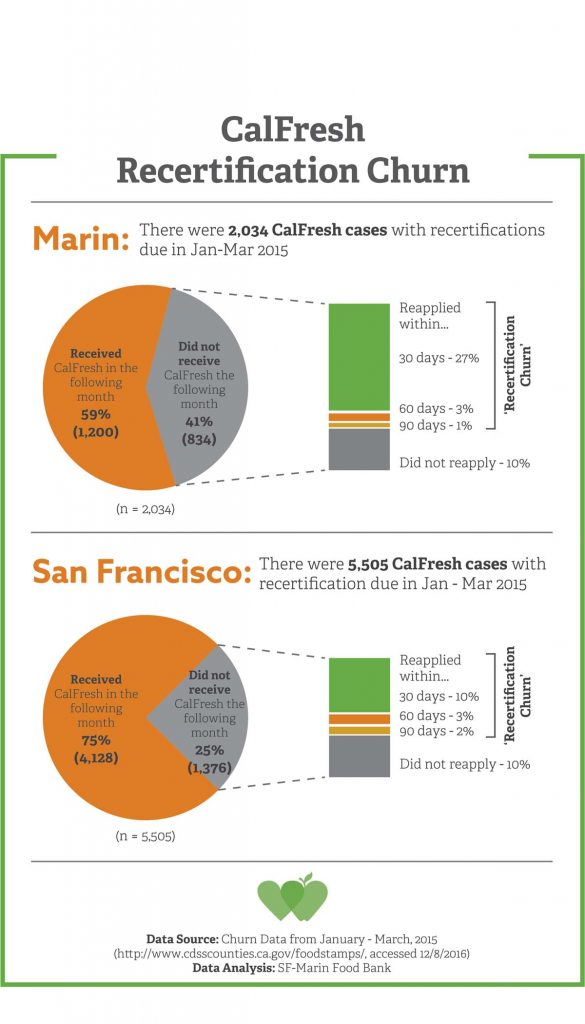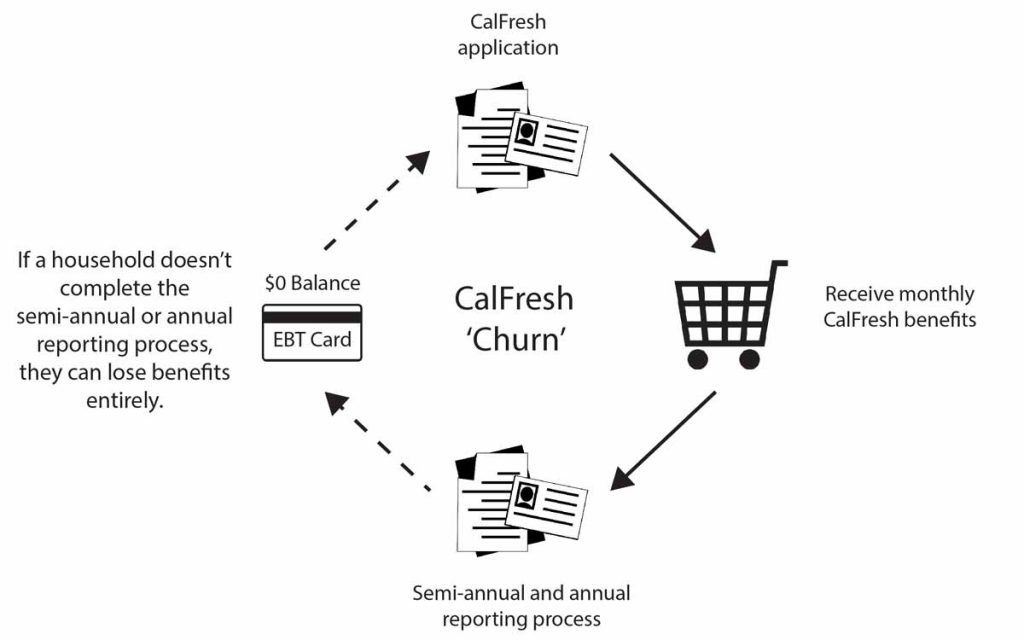State leadership is needed to implement modern solutions.
In our previous posts, we detailed why CalFresh ‘churn’ is such a big deal – it’s destabilizing for people on the program, expensive for administrators, and all too common.
So what to do about it?
If you were going to create a renewal process for a service or subscription, how would you do it? What user-friendly features would you include to ensure that everyone could complete the process without lapsing and losing services?
Maybe you would use text and email reminders, instead of snail mail. Even better, put it all online, where all subscribers have to do is indicate if anything has changed since their last renewal. In an ideal world, everything would be done over the phone or online at the subscriber’s convenience. Frankly, in the modern world, none of this is too much to expect.
Unfortunately, the CalFresh renewal process is nothing like this. Clients typically get one letter by mail telling them their deadline for renewal is imminent, but the letter is difficult to understand and the requirements (submitting documents and completing an interview with county staff) are designed for the convenience of the county office, not the person in need of assistance. Not surprisingly, statewide 31% of people with a CalFresh recertification due don’t complete the process successfully. (Read our last blog post about how recertification works).
We have been digging in on this issue and have identified some common-sense solutions. Below are our top recommendations – and the research to support them — to make renewal more modern and user-friendly. We recommend that the state of California and counties work together to implement them.
- Modernize the process for interview scheduling: ‘Modernizing the CalFresh User Experience’
- Allow clients to schedule their own interviews for times that work for them – rather than the county assigning pre-determined interview times. Or, even better:
- Offer ‘on-demand interviews’ so that clients can simply call the county phone number during regular business hours, and ask for an interview over the phone in that moment. This would eliminate scheduling challenges entirely.
- Modernize communication methods between clients and the county:
- Use text and email. Use modern channels of communication to inform and remind clients about their upcoming recertification. ‘Promptly: Simple Text Message, Clear Call to Action’
- Do it all over the phone. Make it possible to “verbally sign” required documents over the phone, eliminating the need to send paperwork. Examples of this include using voice recognition technology to verify identity over the phone, and using a numeric PIN system. ‘Telephonic Signature in California Counties’
- Make it all user-friendly and intuitive:
- Simplify bureaucratic forms, so that paperwork is always clear and easy to understand. Social and Behavioral Sciences Team of the Executive Office of the President, 2016 Annual Report
At the end of the day, we know that what gets measured gets done. So, we took county-level churn data and analyzed it over time, to help us see where there are successes and where they may be trends. Tableau visualizations of churn data by county.
The State should be doing the same thing. The problem is, the state doesn’t have the best data, and it has to rely on county-generated reports – with no way to verify or check their accuracy. At a minimum, the state should:
- Collect monthly churn data reports from counties, that highlight certain important churn metrics. CDSS (California Department of Social Services) is developing the report format right now, and we have already made recommendations about what should be included. ‘Measuring Churn‘
- Collect the raw, full data set every quarter – not just a selective monthly report. In order to fix churn statewide, the state needs the raw data and the opportunity to analyze it on a deeper level.
- Offer technical assistance to counties to implement and assess the effectiveness of churn reduction strategies, starting with simplifying and streamlining the interview scheduling system, modernizing how clients receive reminders, and implementing telephonic signature options.
If the State takes the lead on implementing modern solutions and improves its collection and analysis of churn data, we know we’ll move the needle.
In case you missed them, here are the other posts in this blog series about CalFresh churn:
Post #1: CalFresh ‘Churn’ Means More Missing Meals in SF and Marin
Post #2: The Steep Cost of CalFresh ‘Churn’
Post #3: CalFresh ‘Churn’ Fueled by Outdated, Inadequate Processes




Share